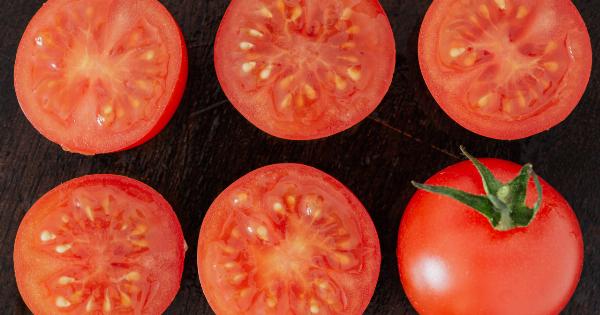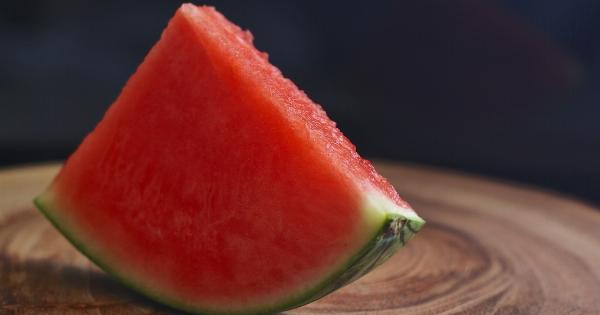The fig is a versatile fruit that has been enjoyed by cultures around the world for thousands of years. Known for its unique taste and texture, figs can be enjoyed fresh, dried, or in a variety of culinary creations.
In this article, we will delve into the fascinating world of figs, exploring their history, nutritional benefits, and culinary uses.
History and Cultivation
Figs have a long and rich history dating back to ancient times. Originating in the Middle East and Western Asia, figs were one of the first fruits to be cultivated by humans.
They were highly prized by the ancient Egyptians, Greeks, and Romans, who considered them a sacred fruit associated with fertility and abundance.
Fig trees are relatively easy to grow and are found in many parts of the world today. They thrive in warm and dry climates, making them particularly well-suited for Mediterranean regions.
The tree itself is aesthetically pleasing, with its broad leaves and twisting branches providing ample shade.
There are hundreds of fig varieties, each with its own unique flavor and characteristics. Some popular cultivars include Black Mission, Brown Turkey, Kadota, and Calimyrna.
Each variety differs in terms of taste, color, and texture, giving fig lovers plenty of options to choose from.
Nutritional Benefits
Figs are not only delicious but also packed with essential nutrients. They are a good source of dietary fiber, which aids in digestion and promotes a healthy gut.
Figs also contain vitamins A, E, and K, as well as minerals such as calcium, potassium, and magnesium.
One of the standout nutritional features of figs is their high antioxidant content. Antioxidants help protect the body from damage caused by free radicals, which can contribute to various chronic diseases.
The antioxidants found in figs are particularly beneficial for heart health, as they help lower blood pressure and reduce inflammation.
Furthermore, the natural sugars found in figs make them a great energy-boosting snack. They provide a quick and sustainable source of carbohydrates, making them an ideal choice for athletes and those in need of a natural energy pick-me-up.
Culinary Uses
From sweet to savory, fresh to dried, figs can be incorporated into a wide range of culinary creations. Here are some creative ways to enjoy this versatile fruit:.
1. Fresh Figs:
Enjoy figs in their simplest form – fresh and ripe. Their natural sweetness makes them a delicious snack on their own or as a topping for salads and yogurt.
2. Fig Jam:
Create a delectable spread by making homemade fig jam. Simply simmer figs with sugar, lemon juice, and water until thickened, and spread it on toast or use it as a filling for pastries.
3. Fig Pizza:
Add a unique twist to your regular pizza by topping it with fresh figs, goat cheese, and arugula. The combination of flavors is sure to impress your taste buds.
4. Fig and Prosciutto Wraps:
Wrap sliced figs in thin strips of prosciutto for an elegant appetizer or a light lunch. The salty prosciutto complements the sweetness of the figs perfectly.
5. Fig Smoothies:
Blend fresh or dried figs with yogurt, honey, and your choice of fruits for a nutritious and satisfying smoothie. This is a great way to incorporate figs into your daily routine.
6. Fig and Nut Salad:
Add sliced figs to your favorite salad for a burst of natural sweetness. Pair them with nuts like walnuts or almonds for added crunch and nutritional value.
7. Fig Ice Cream:
Make homemade fig ice cream by pureeing figs and mixing them into your favorite ice cream base. The creamy texture and rich flavor will leave you craving more.
8. Fig Chutney:
Combine figs with onions, vinegar, and spices to create a tangy chutney. This versatile condiment pairs well with cheese, meat, or even as a spread for sandwiches.
9. Fig Baked Goods:
Figs can add a delightful touch to various baked goods. Try incorporating them into muffins, cakes, or bread for a moist and flavorful treat.
10. Dried Figs:
Dried figs are a convenient and portable snack. They can be enjoyed on their own, as a topping for oatmeal or cereal, or even rehydrated and used in cooking.
Conclusion
The fig is truly a versatile fruit that offers both delicious flavors and numerous health benefits. Whether you enjoy them fresh, dried, or in a variety of culinary creations, figs are sure to satisfy your taste buds.
Explore the many possibilities this fruit has to offer and incorporate figs into your diet for a tasty and nutritious experience.





























